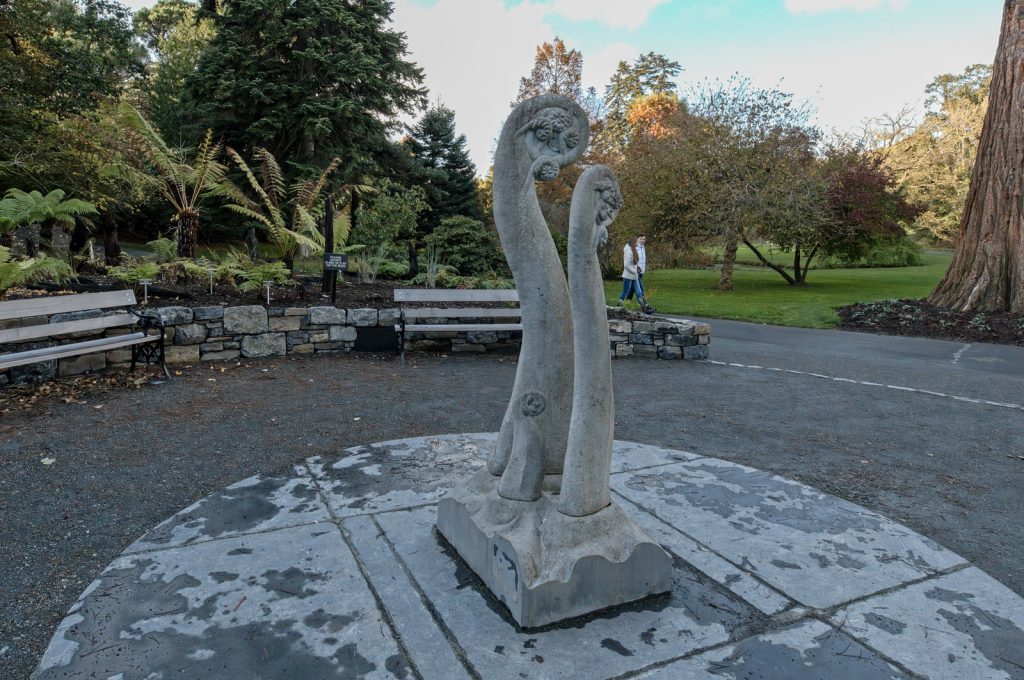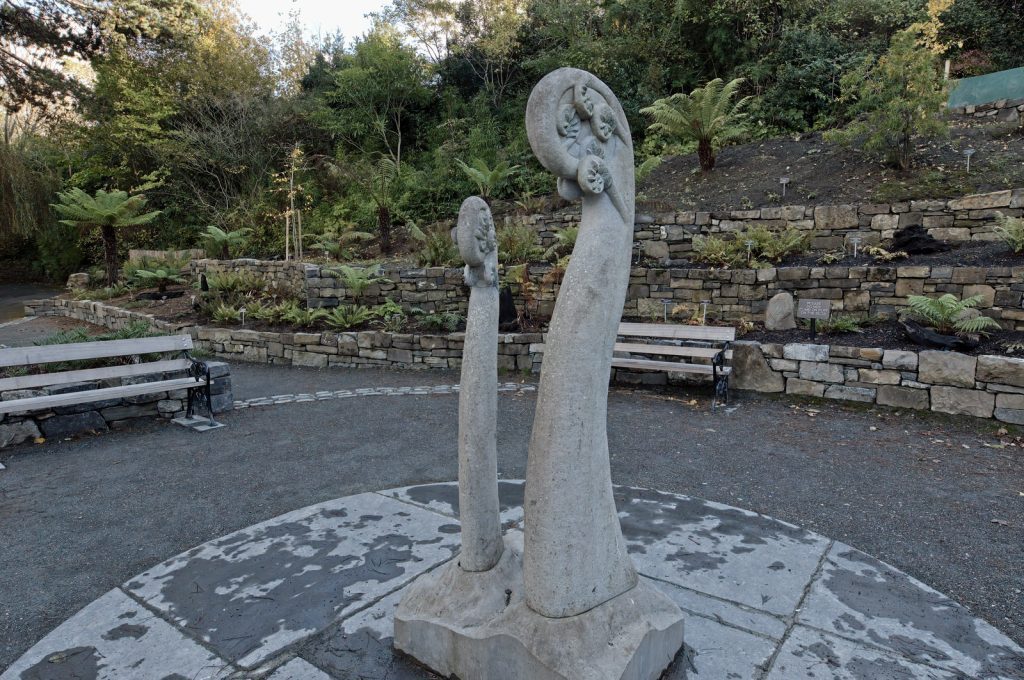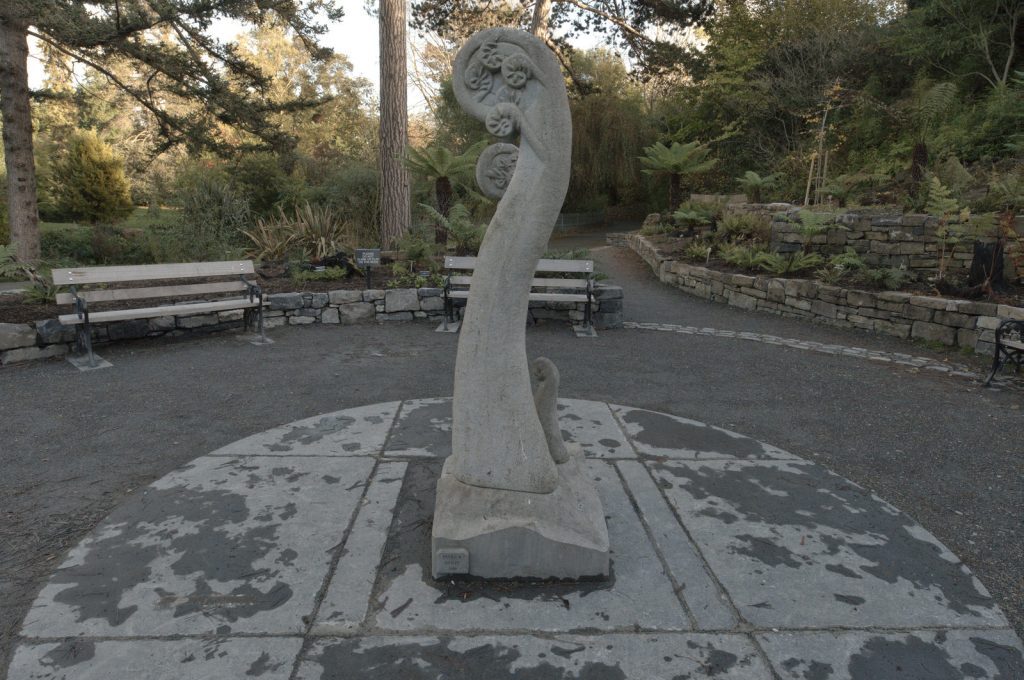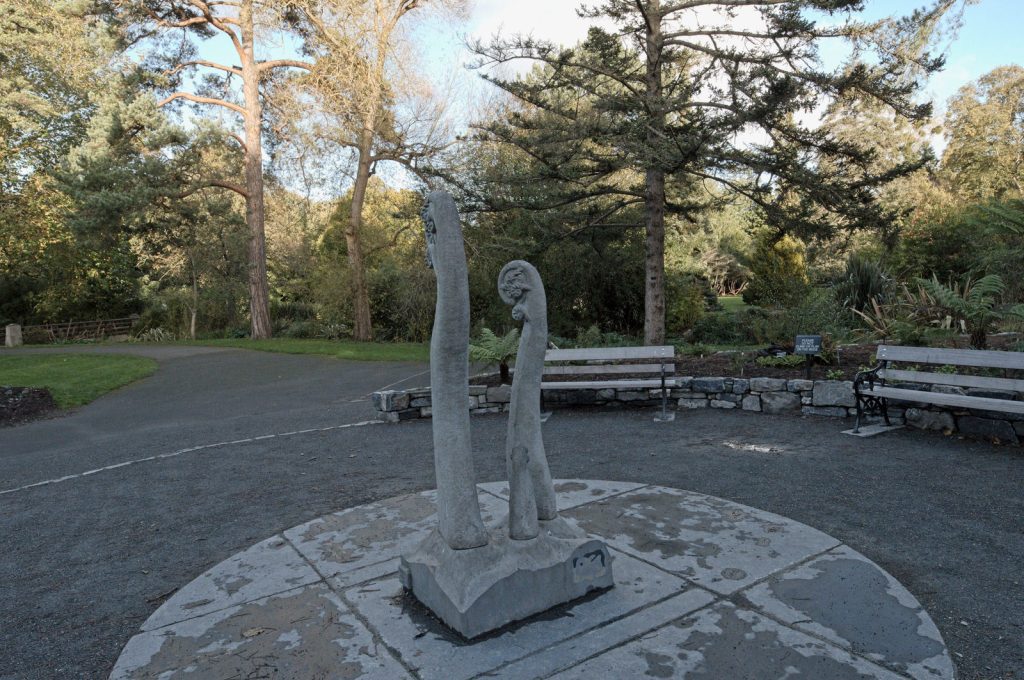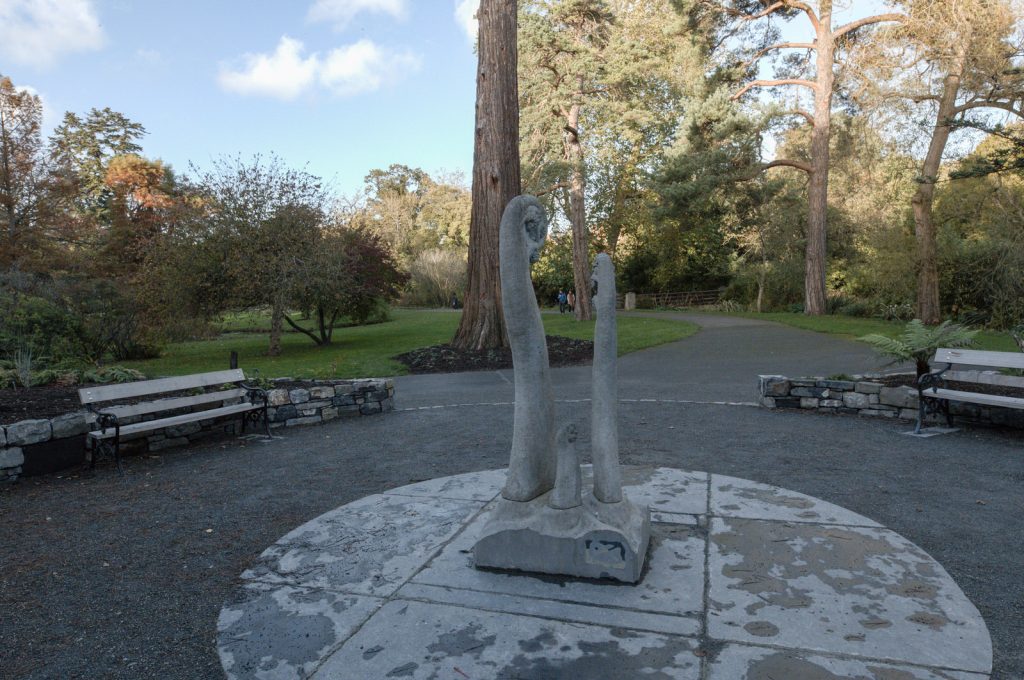SATURDAY 5 NOVEMBER VISIT – USED A SONY FX30 WITH A SIGMA 14MM LENS
This fern sculpture commission was purchased by the OPW and installed at the Botanic Gardens in Dublin.
My understanding is that Patrick Barry relocated to New Zealand in 2014.
Dicksonia antarctica, the soft tree fern or man fern, is a species of evergreen tree fern native to eastern Australia, ranging from south-east Queensland, coastal New South Wales and Victoria to Tasmania.
These ferns can grow to 15 m (49 ft) in height, but more typically grow to about 4.5–5 m (15–16 ft), and consist of an erect rhizome forming a trunk. They are very hairy at the base of the stipe (adjoining the trunk) and on the crown. The large, dark green, roughly-textured fronds spread in a canopy of 2–6 m (6 ft 7 in – 19 ft 8 in) in diameter. The shapes of the stems vary as some grow curved and there are multi-headed ones. The fronds are borne in flushes, with fertile and sterile fronds often in alternating layers.
The “trunk” of this fern is merely the decaying remains of earlier growth of the plant and forms a medium through which the roots grow. The trunk is usually solitary, without runners, but may produce offsets. They can be cut down and, if they are kept moist, the top portions can be replanted and will form new roots. The stump, however, will not regenerate since it is dead organic matter. In nature, the fibrous trunks are hosts for a range of epiphytic plants including other ferns and mosses.
The fern grows at 3.5 to 5 cm per year and produces spores at the age of about 20 years.
Reproduction by this species is primarily from spores, but it can also be grown from plantlets occurring around the base of the rhizome.
In cultivation, it can also be grown as a “cutting”, a method not to be encouraged unless the tree-fern is doomed to die in its present position. This involves sawing the trunk through, usually at ground level, and removing the fronds; the top part will form roots and regrow, but the base will die.
